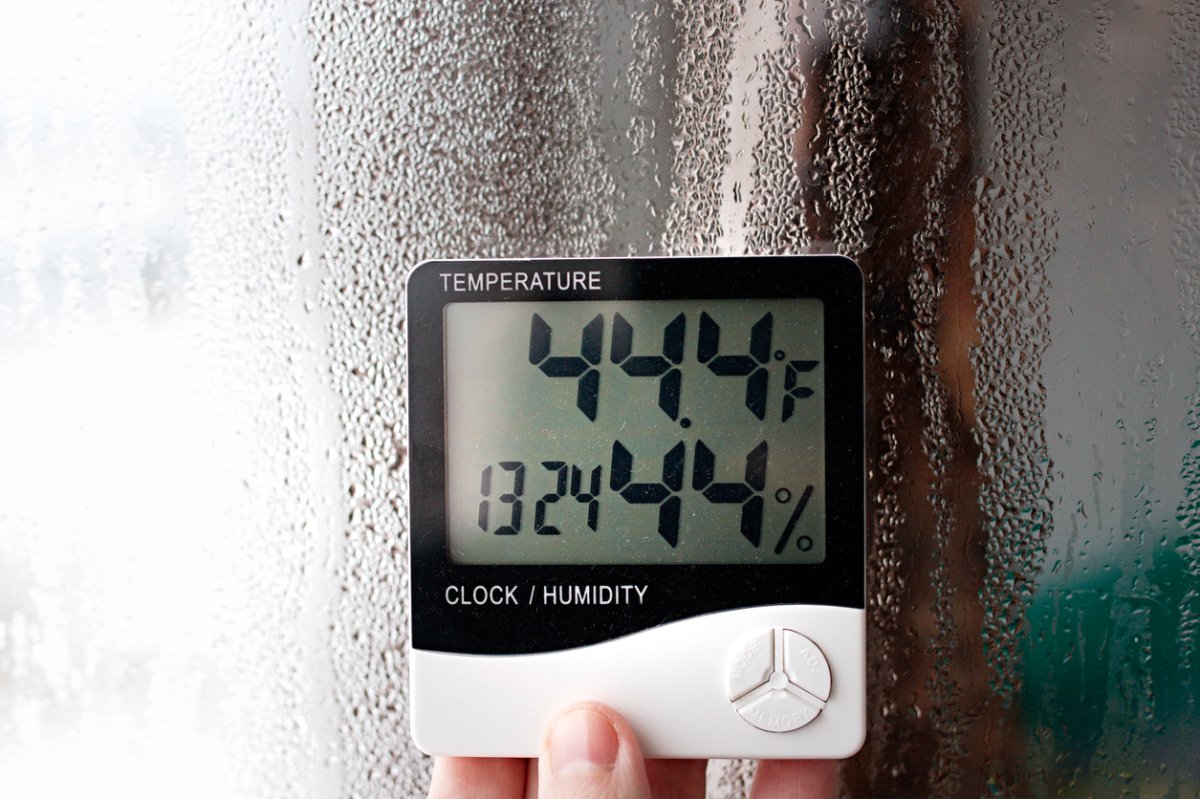

We may earn revenue from the products available on this page and participate in affiliate programs. Learn More ›
While you can’t change the humidity levels outdoors, you can take steps to control humidity levels inside your home. This can improve your comfort and health, and can even prevent damage to home systems and structures.
The U.S. Environmental Protection Agency (EPA) says that ideal indoor humidity levels should be between 30 percent and 50 percent. Some research suggests that the ideal relative humidity for sleeping is slightly higher, at 40 to 60 percent. Though logic tells us that in desert regions, indoor humidity always falls well below that and soars higher in Southeastern homes, temperature also affects indoor humidity and resulting air quality. “The 30 to 50 percent range is standard. But personal comfort, health, and the season should guide specifics,” says Josh Mitchell, owner of Air Conditioner Lab.
Effects of High Indoor Humidity
When the humidity is higher than 50 percent, you won’t just feel sticky and uncomfortable; the increased moisture in the air can lead to mold growth, and condensation on windows and toilet tanks. The water droplets that collect can eventually cause the rot and decay of materials in your home, such as flooring and structural elements.
Effects of Low Indoor Humidity
Inadequate humidity in the house can also cause problems. Low humidity can result in dry skin, nasal irritation and sinus issues, and increased static electricity. Excessively dry air, at 5 percent humidity or less, can also cause wallpaper to peel away and wood furniture and building materials to shrink, which can lead to warping or cracking. Monitoring your home’s moisture levels and keeping them in the ideal indoor humidity range can prevent these things from happening. Our tips for raising humidity levels below can help.
How to Measure Indoor Humidity
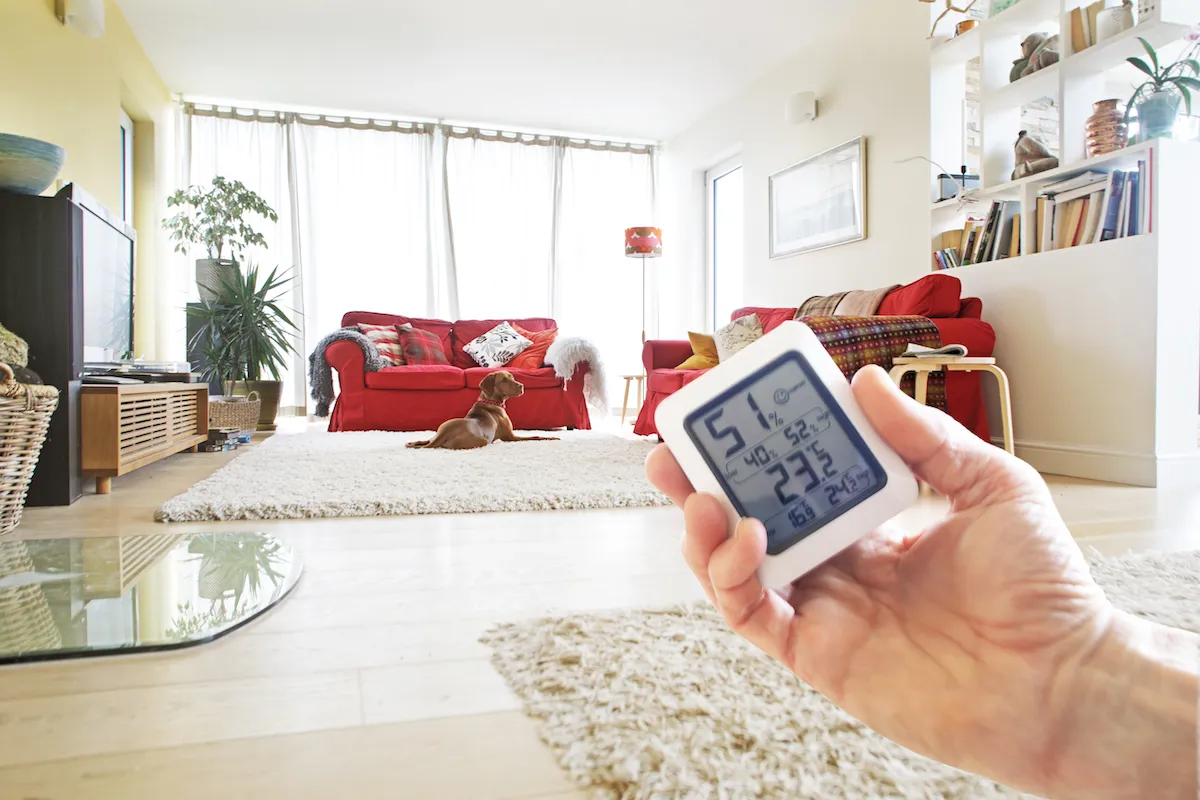
To monitor home humidity levels, consider purchasing several inexpensive gauges, such as Pinmu’s Mini Digital Humidity Meters. Position them in different areas of your home, because humidity can vary from room to room. For example, basements are often more humid than other rooms because moisture from the ground can seep through basement walls.
While hygrometers are the go-to tools for measuring humidity, Mitchell suggests paying close attention to physical signs too. “Consistent condensation on windows, a musty smell, or unusual respiratory responses can all signal high humidity,” Mitchell says. If the humidity is over 50 percent or under 30 percent in one or more areas, try the following solutions to adjust the humidity level at home.
How to Lower Indoor Humidity
To prevent problems like window condensation, mold, and mildew, lower overly humid spaces to the ideal 30 to 50 percent range. Lowering humidity levels also can make the environment less hospitable for some pests, and more comfortable for you and your family.
Replace an old air conditioner.
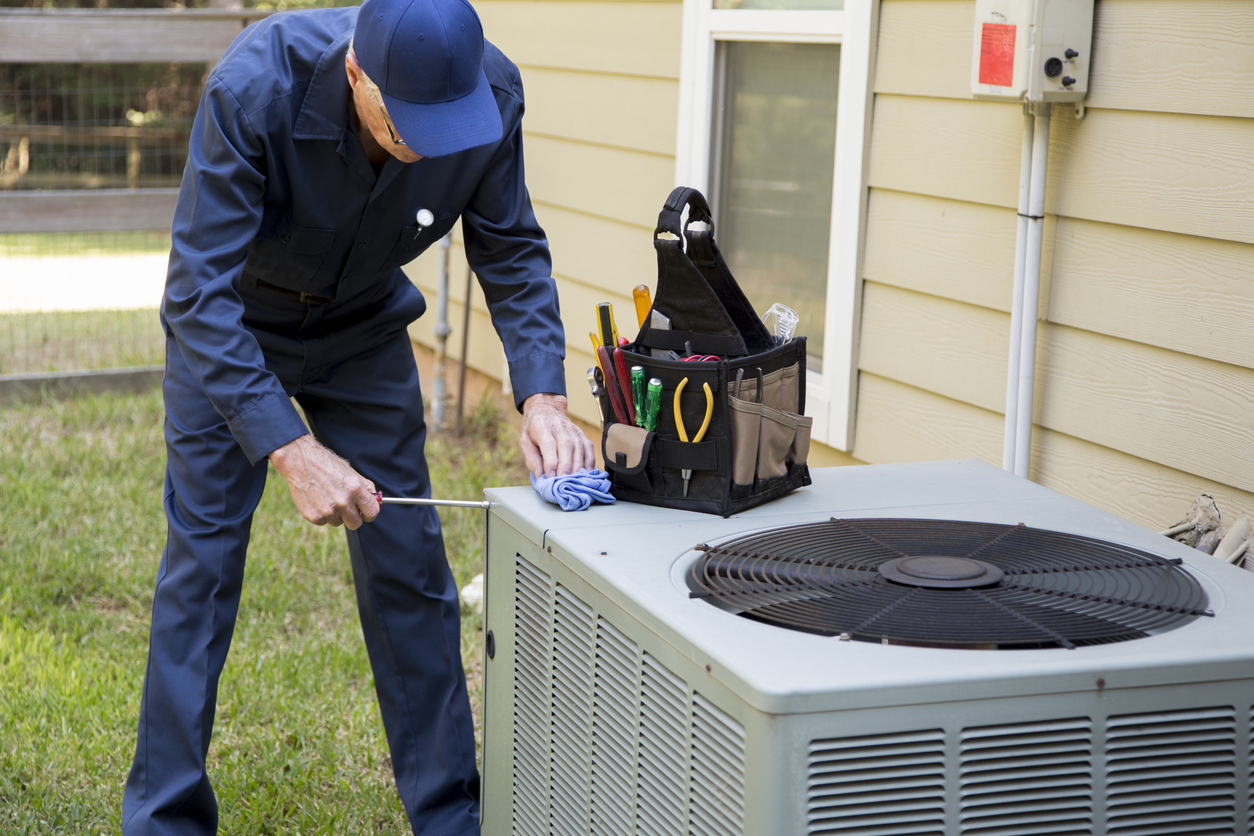
In addition to cooling indoor air, AC units remove moisture. A central air conditioning unit should last 12 to 15 years before needing replacement, and a window unit should last 8 to 10 years. When air conditioners are older than their predicted useful life, their components can wear out and they may no longer remove humidity efficiently.
“Regular maintenance is key. I recommend professional servicing every year before summer, regular filter changes (every 30-90 days, depending on use), and keeping the unit and surrounding area clean and free from debris,” Mitchell says. “Also, ensuring the refrigerant level is adequate can prevent overworking the system.”
Use room dehumidifiers.

Air conditioners might not remove enough humidity in high-moisture areas, like finished basements. A supplemental basement dehumidifier, such as the GE 50-Pint Dehumidifier with Built-in Pump, can make even the muggiest areas feel more pleasant.
Cover a dirt basement floor with a vapor barrier.
Most of today’s new homes have poured concrete basement floors, but many houses built before 1950 still have unfinished dirt floors. The moisture in a dirt-floor basement can be as high as 100 percent, depending on the dampness of the soil, and that moisture can filter up into other areas of the home. The solution, in this case, is placing a vapor barrier such as 6-millimeter plastic sheeting over the dirt, and then covering the sheeting with several inches of sand or pea gravel to hold it in place.
Install a bathroom exhaust vent.
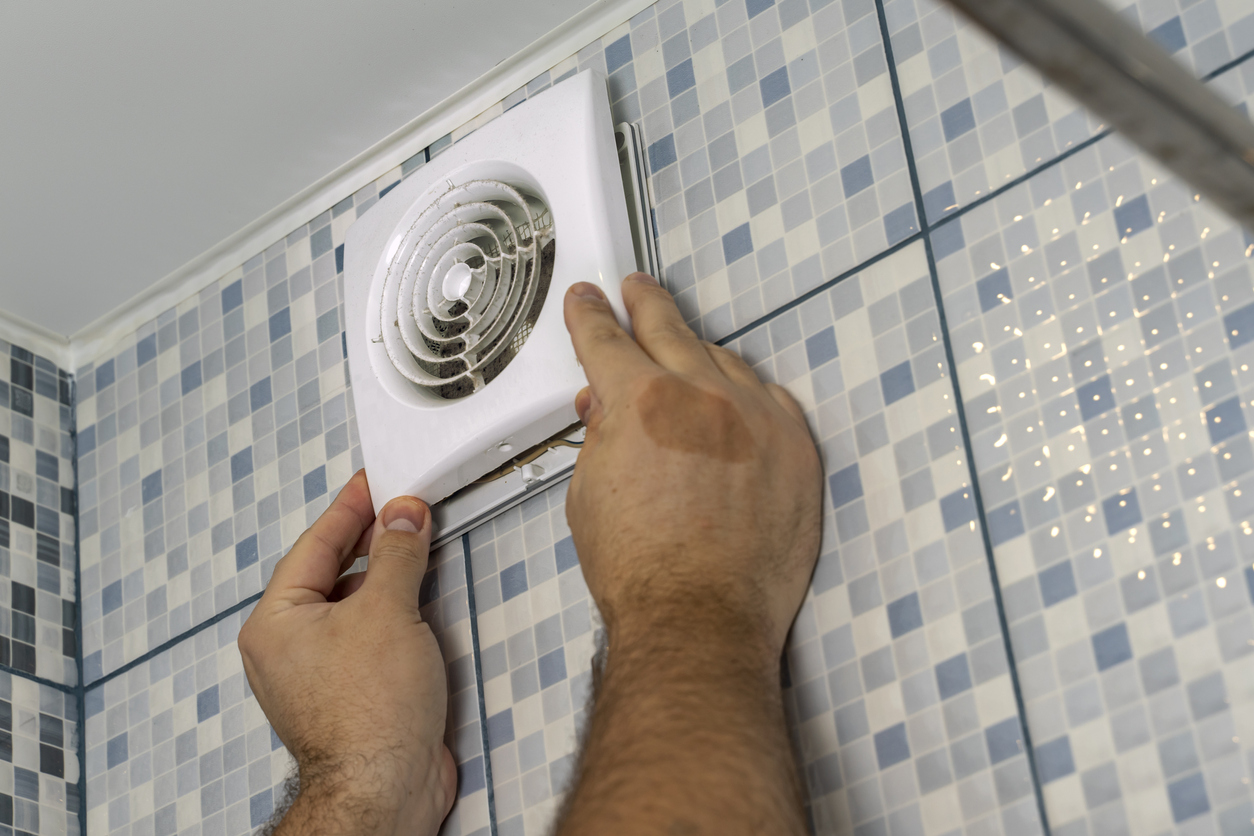
As much as you enjoy long, hot showers or baths, all that steam will float out as soon as you open the bathroom door. Run a bathroom exhaust fan, such as the Panasonic WhisperFit exhaust fan, during and after bathing to draw steamy air up, out, and away. (Be sure to determine the right size of bathroom exhaust fan for your needs before purchasing.)
Consider a whole-home dehumidifier.
When the indoor humidity levels in the entire home are consistently high—if they regularly register higher than 50 percent humidity—it might be time to consider adding a whole-house dehumidifier. “Whole-house dehumidifiers are particularly useful in regions with high humidity levels, such as coastal areas,” says Dan Johnson, vice president at Sanders & Johnson, a heating and cooling service company in Denver, Colorado. Additionally, these systems can help prevent the proliferation of pests such as dust mites and insects.
Whole-house dehumidifiers are designed to regulate and maintain optimal humidity levels throughout a home. They are a part of the home’s central heating and cooling system that can remove excess moisture as air cycles through the main vent system. This type of dehumidifier should be installed by an HVAC professional.
How to Increase Indoor Humidity
If the humidity level at home is too low, add moisture to the air as best you can, especially in the winter. Twenty-five percent humidity in winter is generally considered healthy; aim for the 30 percent threshold the rest of the year. To increase humidity in an overly dry home, you can start with simple household solutions or add humidity as needed with a humidifier.
Increase humidity while doing household tasks.
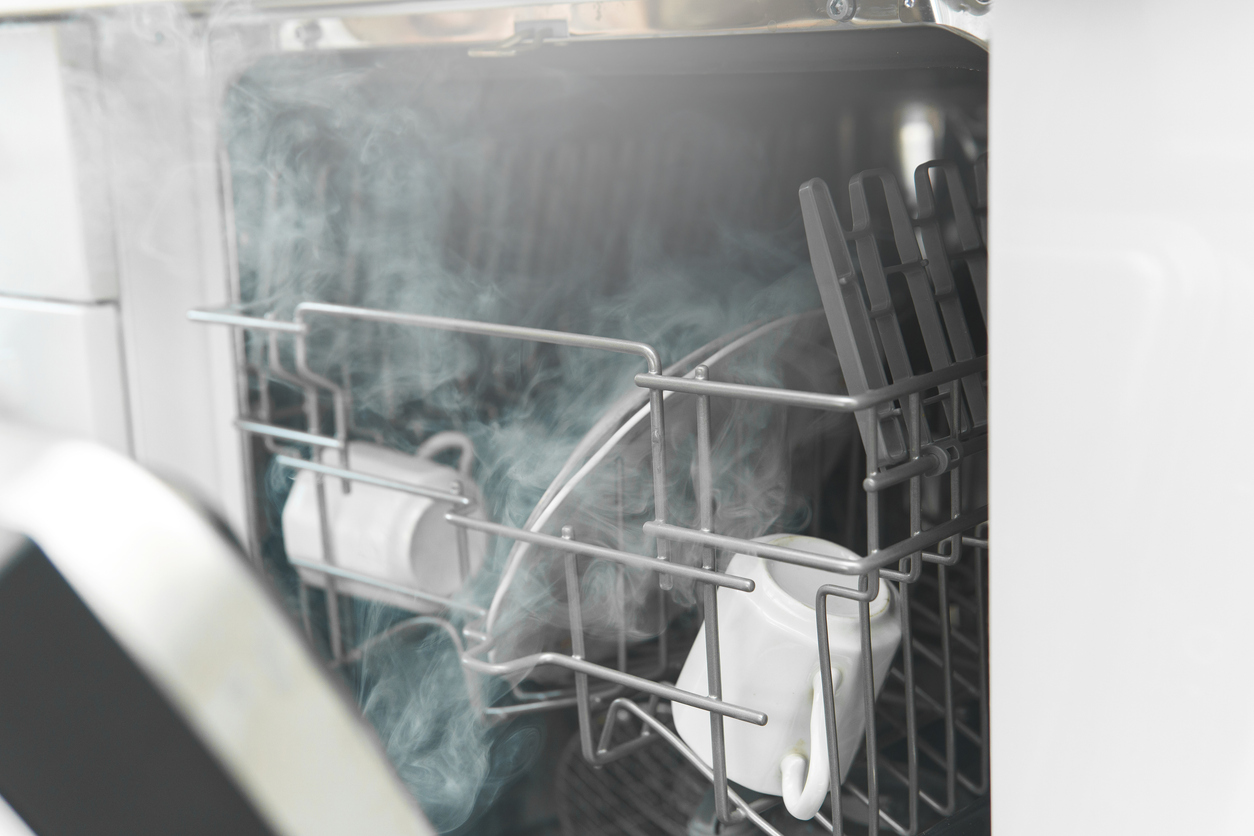
Those who live in dry climates know that any bit of humidity will benefit indoor air, especially during dry winters. These simple changes can add humidity to your dry home:
- Open the dishwasher after the final rinse cycle and allow the steam to flow out rather than using the dry cycle.
- Keep a large pot of water simmering on the stove or wood stove.
- Air-dry laundry on an indoor clothesline.
- Allow bathwater to cool in the tub before draining it to release moisture into the air. Do this with a sink full of warm dishwater, too.
- Acquire some houseplants, which release moisture into the air through their leaves.
- Keep a fine-mist spray bottle handy and spray the air lightly every hour or so. You don’t want to spray so much that furniture or countertop surfaces become wet; just a light spritz here and there will help raise the humidity level at home.
Use a portable humidifier to relieve skin and respiratory problems.
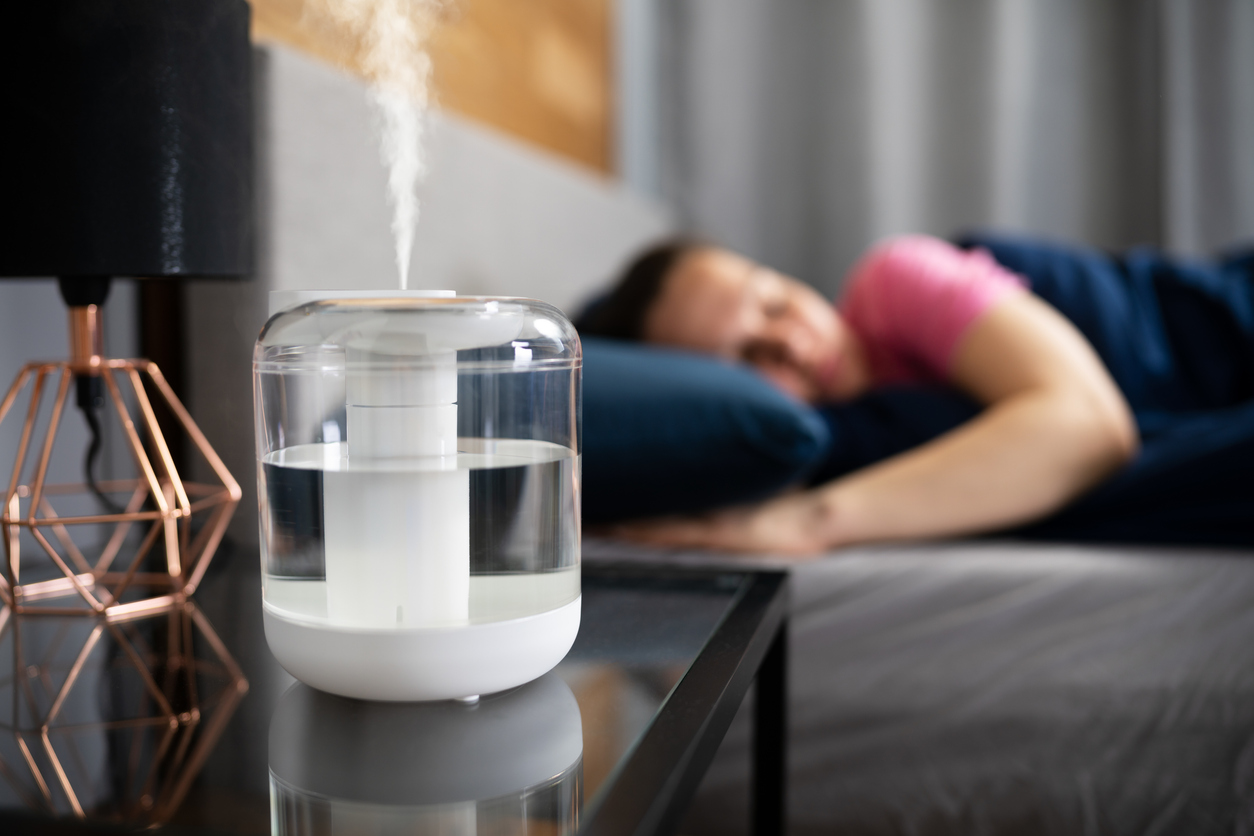
If a family member suffers from dry nasal passages, sinusitis, or skin irritations, all of which can be aggravated by low humidity, a humidifier can help alleviate symptoms. A portable humidifier like Pure Enrichment’s Mist Aire Ultrasonic Cool Mist Humidifier will introduce soothing moisture to the air and reduce health issues as well as annoying static electricity. This type of humidifier is a great option for bedrooms, living rooms, and nurseries, and might only need to run while sleeping.
Consider a large-room or whole-home humidifier.
In parts of the country, such as areas of Nevada, Arizona, and New Mexico, the air can be severely dry all year long and increasing indoor humidity is top of mind most of the year. Homeowners in these regions could also consider installing a large room humidifier to cover more ground or talking with an HVAC professional about whole-home humidifiers.
Switch from forced-air heat to a different heating method.
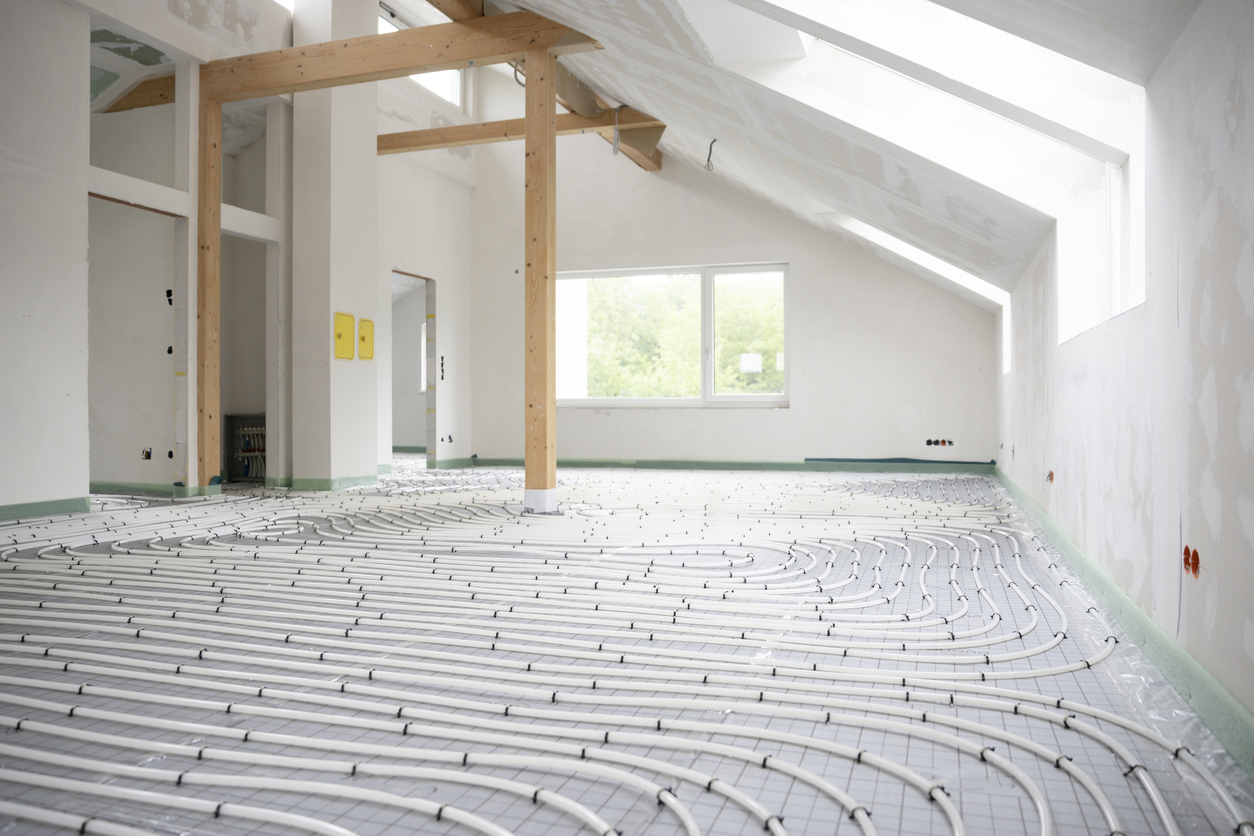
A standard furnace heats the air and then distributes it throughout the home, but the warming process dries the air and removes humidity. If your house has too little humidity mostly during the winter months, switching from a forced-air heating system to radiant heat will keep the air from drying out.
Although this is a more expensive solution, it will help those most affected by dry air and can be incorporated into floor replacements or remodels. Radiant heat goes down beneath flooring and behind wall panels, but it’s typically not a DIY job. A professional radiant heating contractor should do the work.
Final Thoughts
The amount of humidity in the air varies from morning until night, from one season to another, and due to weather and other factors. Controlling indoor humidity is not just a comfort issue. It can indirectly affect health by how humidity increases or decreases concentrations of indoor air pollutants. The first step toward a comfortable and healthy relative indoor humidity is a solid measurement. Homeowners can then take simple to major steps to keep the air from being too dry or too damp and to enjoy consistently ideal indoor humidity levels.
